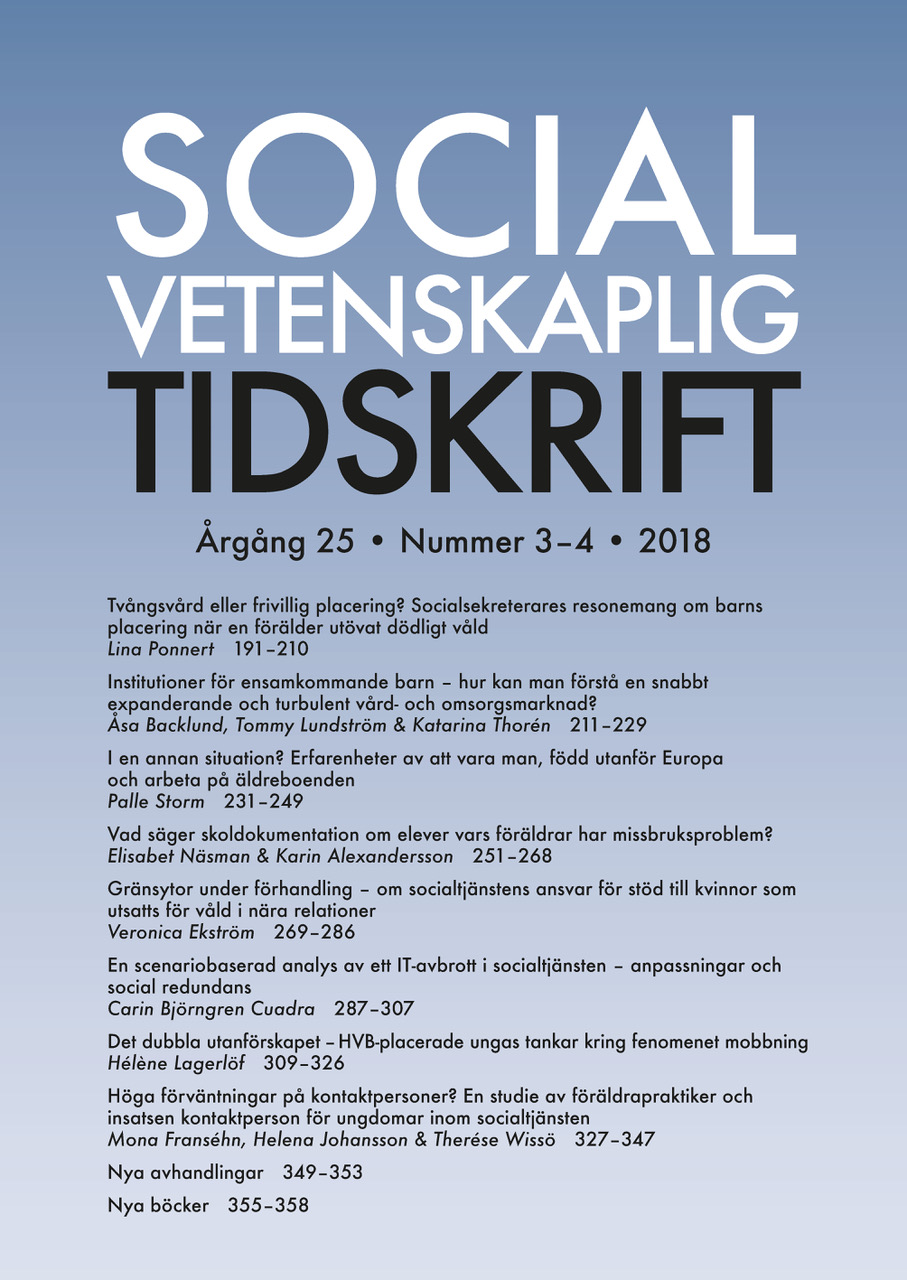Institutioner för ensamkommande barn
Hur kan man förstå en snabbt expanderande och turbulent vård- och omsorgsmarknad?
DOI:
https://doi.org/10.3384/SVT.2018.25.3-4.2364Abstract
Residential care for unaccompanied minors. How can a growing and turbulent care market be understood?
The number of unaccompanied minors arriving in Sweden has grown rapidly in recent years and the care of these children has become a significant part of the Swedish child welfare system. In this article, we discuss what has happened to the residential care market (known as HVB for short) in which most of these children are placed by the municipal social services. The specific questions we seek to illuminate are: Which type of residential care actors have expanded their operations? Have new actors entered the residential care market for unaccompanied minors? How can we understand changes in the residential care market in the current situation? The study is based upon the Health and Social Care Inspectorate’s registry of all licensed residential care units in Sweden. We compare data for all residential care units that targeted unaccompanied minors in 2014 with an updated register from March 2016. The residential care units are categorized based on organizational type (municipal, large and small private companies, municipal entrepreneurs, and non-profit organizations) and the article illustrates the composition of organizational type. The results show that despite the growing need for residential care for unaccompanied minors, the composition of organizational type has not changed significantly since 2014. However, the number of beds for unaccompanied minors is higher than for traditional HVBs, and it has increased between 2014 and 2016. The study also indicates that the composition of residential care for unaccompanied minors differs from the residential care market for other groups of children and young people.
Downloads
Publicerad
Referera så här
Nummer
Sektion
Licens
Allt material i Socialvetenskaplig tidskrift publiceras sedan 2022 (Vol 28 Nr 2) med omedelbar öppen tillgång (open access), under Creative Commons-licensen CC BY 4.0. Upphovsrätten till innehållet tillhör respektive författare.
Allt innehåll i tidskriften är fritt tillgängligt utan kostnad och får fritt läsas, laddas ned, kopieras, delas, skrivas ut och länkas. När innehållet används måste författare, källa och licens anges. Författaren kan fritt göra sin publicerade text tillgänglig på institutionella och internetbaserade arkiv, exempelvis sitt lärosätes digitala arkiv eller andra tjänster för detta.
Inga publiceringsavgifter tas ut vid publicering i Socialvetenskaplig tidskrift.

